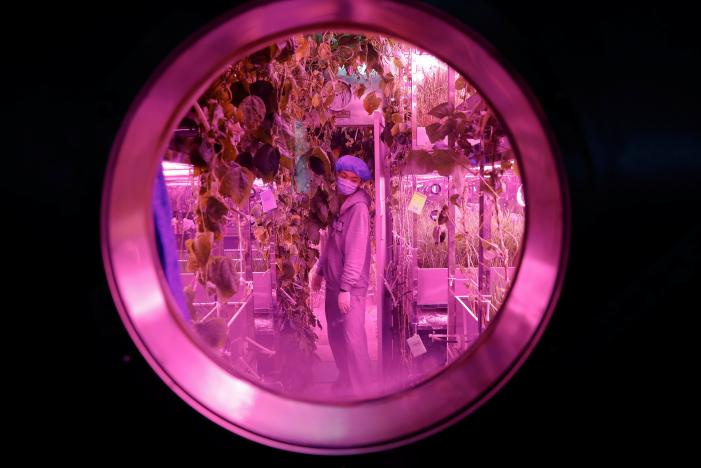The 200-day life simulation program on the moon has begun in China

On July 9, a 200-day experiment was started in China to simulate living conditions on another planet. Sealed behind the steel doors of two bunkers in the suburbs of Beijing, students are trying to figure out what it is like to live in a space station using limited resources: the generation of oxygen from plants, the processing of urine to produce drinking water, and others.
Four students of Peking University of Aviation and Astronautics will face all the difficulties that the crew of a real space station overcomes. They will live alone in a tiny space, cut off from friends and family, most of the year. In addition, the project support team has developed a specific set of daily tasks for students to support their motivation. The results of this experiment will show how well the human body can cope with the lack of sunlight for a considerable time.
The 160-square-meter lab where they will be staying all this time is called Yuegong-1 or Lunar Palace 1. This is the first site of its kind in China and the third biological life-support system (BSZHO) in the world. It is located on the campus of Beihang University, and four current volunteers replaced four others who completed the initial mission to stay in the laboratory for 60 days.
After completing the 200-day mission, a third group of volunteers will live there for another 105 days to complete the 365-day experiment. This study is the second attempt of the Beihang University to test the readiness of the biological life support system to work on the Moon.
President Xi Jinping wants China to become a global power in space exploration, and plans to send the first probe to the dark side of the moon by 2018 and deliver astronauts to the moon by 2036. The Lunar Palace 365 experiment may allow them to stay there for a long time.
At the station, natural human waste is recycled using the biofermentation process. In addition, as an experiment, grain and vegetable crops will be grown here with food and other wastes. Lunar Palace consists of a large living space and two modules for growing plants.
Under the main cabin 42 square meters were allocated, while the height of each cabin is 3.5 meters, its area is 50-60 square meters. In the main compartment there are four sleeping cabins, a common room, a toilet, a room for recycling and breeding animals. Such a system allows volunteers to conduct research and at the same time satisfies their basic needs.
Researchers believe that the program could strengthen the knowledge and technical development of China, as well as help the country's scientists understand what people need in order to stay on the Moon in the medium and long term. World leaders in the implementation of space programs also have their own biological life support systems. United States closed BSZHO model at the station Biosphere 2 in Arizona, in Russia - at the station BIOS-3 in Krasnoyarsk.
All Articles